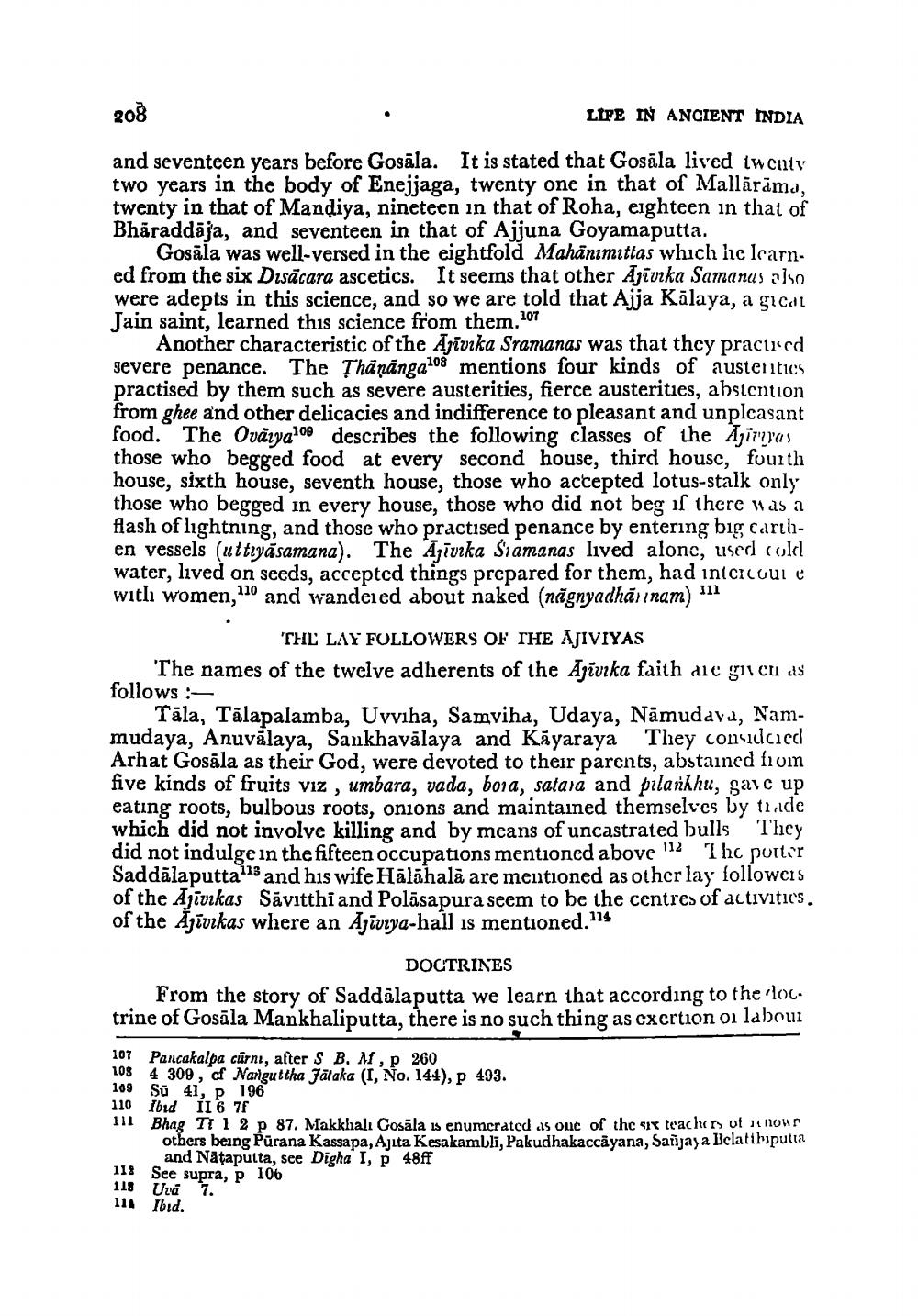________________
208
LIFE IN ANCIENT INDIA
and seventeen years before Gosāla. It is stated that Gosāla lived twenty two years in the body of Enejjaga, twenty one in that of Mallārāma, twenty in that of Mandiya, nineteen in that of Roha, eighteen in that of Bhäraddāja, and seventeen in that of Ajjuna Goyamaputta.
Gosāla was well-versed in the eightfold Mahānimitias which he learn. ed from the six Disācara ascetics. It seems that other Ajiurka Samanus also were adepts in this science, and so we are told that Aija Kālaya, a gical Jain saint, learned this science from them.207
Another characteristic of the Azīvika Sramanas was that they practised severe penance. The Thânănga108 mentions four kinds of austenitics practised by them such as severe austerities, fierce austerities, abstention from ghee and other delicacies and indifference to pleasant and unpleasant food. The Ovalya109 describes the following classes of the Airyas those who begged food at every second house, third house, fourth house, sixth house, seventh house, those who accepted lotus-stalk only those who begged in every house, those who did not beg if there was a flash of lightning, and those who practised penance by entering big carthen vessels (uttryāsamana). The Āzīvika Siamanas lived alonc, used cold water, lived on seeds, accepted things prepared for them, had intcicule with women, 110 and wandered about naked (nägnyadhāni nam) 1
practichee and other deli describes the toond house, th
'THU LAY FOLLOWERS OF THE AJIVIYAS The names of the twelve adherents of the Apīvika faith aie gniends follows:
Tāla, Tālapalamba, Uvviha, Samviha, Udaya, Nāmudaya, Nammudaya, Anuvālaya, Sankhayālaya and Kāyaraya They considcicd Arhat Gosāla as their God, were devoted to their parents, abstained from five kinds of fruits viz, umbara, vada, boia, satara and pilarkhu, gaic up eating roots, bulbous roots, onions and maintained themselves by trade which did not involve killing and by means of uncastrated bulls Thcy did not indulge in the fifteen occupations mentioned above 112 Ihc potter Saddālaputta is and his wife Hālāhalā are mentioned as other lay followers of the Ajīvikas Savitthi and Polāsapura seem to be the centres of activities. of the Ajivikas where an Azīviya-hall is mentioned."
DOCTRINES From the story of Saddalaputta we learn that according to the loc. trine of Gosāla Mankhaliputta, there is no such thing as cxcrtion or labour
111
RO
107 Pancakalpa cūrni, after S B. 11, p 260 108 4 309, of Nanguttha Fälaka (I, No. 144), p 493. 109 Sū 41, p. 196 110 Ibid 11 6 7f
our Bhag Til 2 p 87. Makkhal. Cosāla is enumcrated as one of the six teachers of others being Purana Kassapa, Ajuta Kesakambli, Pakudhakaccāyana, Sanjaya Bclatibipulta
and Nätapulta, see Digha I, p 48ff
See supra, P 106 118 Ura 7. 114 Ibid.




